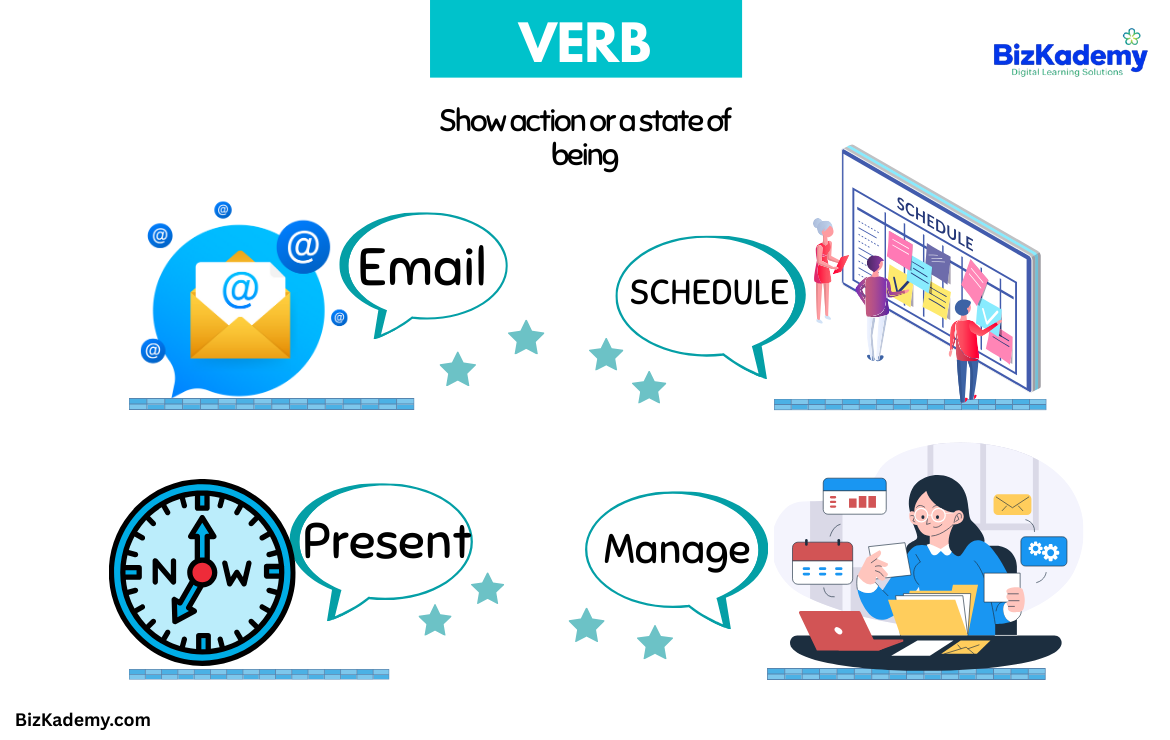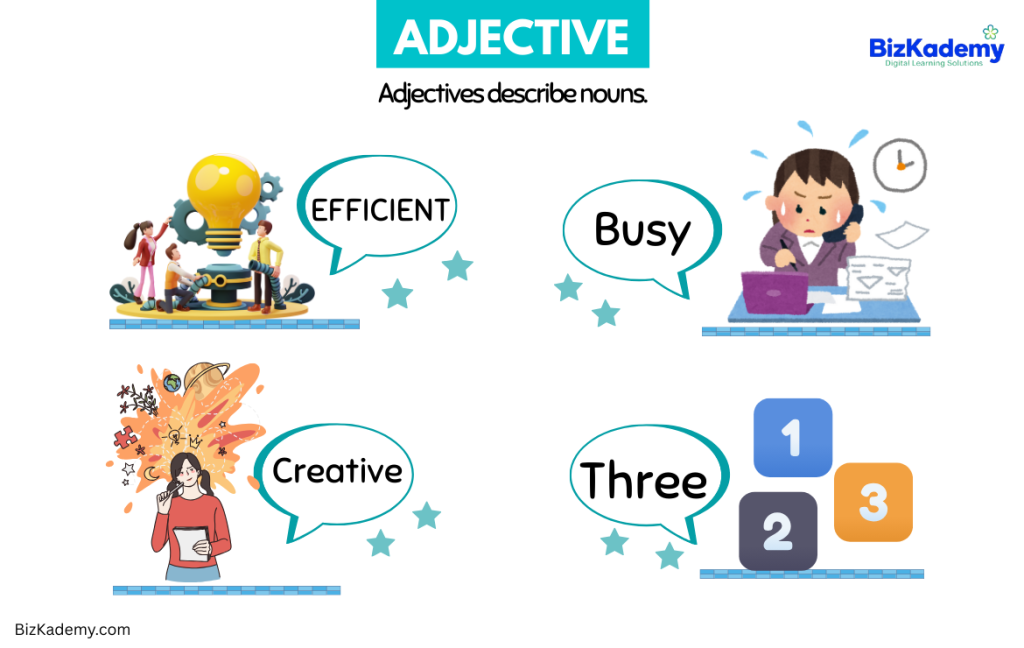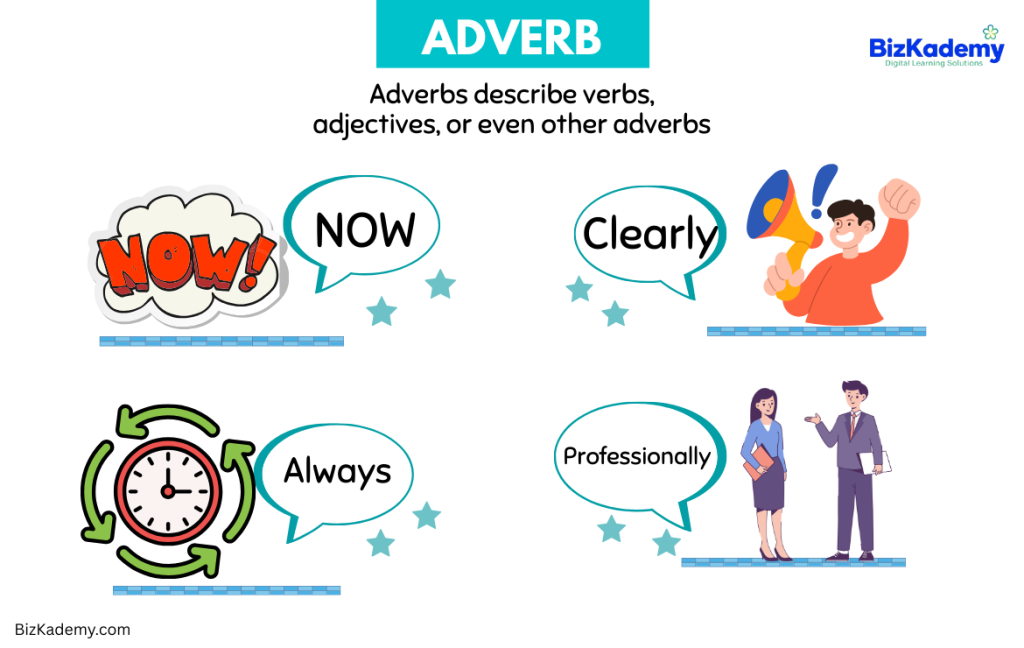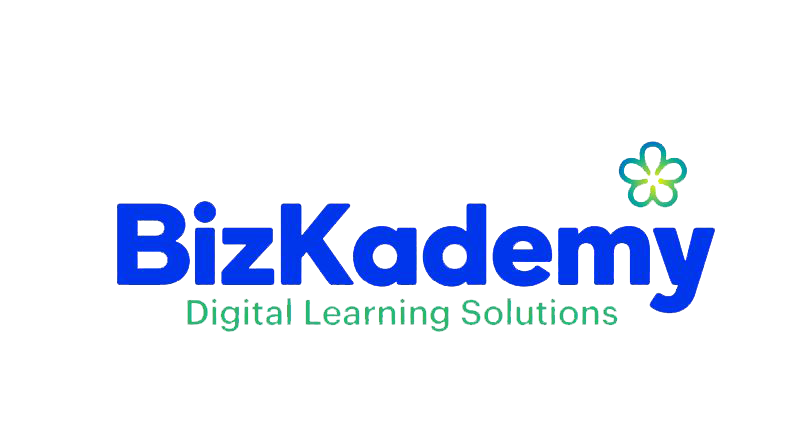Let's Talk Words! Mastering Noun, Verb, Adjective & Adverb (The Fab 4 of Grammar)
Whether you’re writing a school essay, creating catchy content, or just trying to improve your English, mastering the core four parts of speech or wordclass— noun, verb, adjective, and adverb — is something you can not avoid.
But don’t worry — this isn’t your usual grammar lecture its gonna be fun, friendly, and totally beginner-friendly.
Ready? Let’s jump in!
What’s a Noun? (Hint: It’s the Name of the Game!)
Nouns are the building blocks of any sentence. They name people, places, things, or ideas.
Person: manager, intern, Alex
Place: office, conference room, headquarters
Thing: laptop, spreadsheet, presentation
Idea: teamwork, productivity, innovation
Real-Life Scenario:
The manager (person) booked the conference room (place) to review a presentation (thing) that focused on the idea of productivity (idea).

What’s a Verb? (The Heartbeat of the Sentence)
Verbs show action or a state of being. Without verbs, your sentence is just… hanging there awkwardly.
Action Verbs: email, schedule, present, manage
State Verbs: is, are, know, believe
Real-Life Scenario:
The manager (noun) schedules (verb) meetings and presents (verb) updates to the team every week.
Try This: Can you put “to” in front of the word? (e.g., to email, to present) — That’s a verb!

What’s an Adjective? (The Word That Adds Flair)
Adjectives describe nouns. They tell us what kind, how many, or which one.
Quick Examples: efficient, busy, creative, organized, three
Real-Life Scenario:
The organized (adjective) manager (noun) led a busy (adjective) team (noun) on a creative (adjective) project.
Look for words that answer: What kind? Which one? How many?

What’s an Adverb? (The Word That Adds Zoom!)
Adverbs describe verbs, adjectives, or even other adverbs. They often tell us how, when, where, or to what extent.
Quick Examples: efficiently, clearly, now, always, professionally
Real-Life Scenario:
The manager (noun) clearly (adverb) explained the strategy and professionally (adverb) handled the client’s concerns.
Most adverbs end in “-ly” — but not always! (Think: very, now, fast)

Let’s Put It All Together!
Here’s one sentence using all four parts of speech:
“The friendly (adjective) doctor (noun) gently (adverb) cared (verb) for the patient in the busy (adjective) city (noun).”
See how every word has a role? That’s the magic of grammar done right!
Let’s have a story using all four parts of speech
One cold Friday night, Jake (noun), a skilled skateboarder, decided to nail (verb) a new trick. He grabbed his old skateboard and went to the empty parking lot. The streets were quiet (adjective), and Jake skated (verb) smoothly (adverb) down the pavement.
At the end of the lot, he saw a huge ramp. It looked scary (adjective), but Jake was determined (adjective) to conquer it. He raced (verb) quickly (adverb) toward the ramp and launched into the air, twisting gracefully (adverb) before landing safely (adverb).
Jake felt like a champion, knowing this was just the beginning of even bigger tricks!
Why This Matters (Especially If You’re a Writer!)
Whether you’re:
- Writing a blog
- Crafting a LinkedIn post
- Creating captions for Instagram
- Or speaking confidently in a business meeting
Knowing these parts of speech helps you write with clarity, speak with confidence, and connect with your audience.
Final Thoughts
Learning grammar doesn’t have to be boring. It’s like learning the rules of a game. Once you know how to play, you can start winning at communication.
So next time you’re reading a post or writing a message, pause and ask:
- Is that a noun or a verb?
- Does that adjective make the sentence pop?
- Is that adverb even needed?
Start small, have fun, and keep playing with words. After all, every powerful message starts with just one well-chosen word. 😉
Keeping the importance of the topic in mind, BizKademy has created a digital course named Business Writing – by Barera Quadri. This course provides comprehensive training in writing skills, covering essential techniques and strategies. Participants learn the art of persuasion, mastering methods to influence and engage their audience effectively. They are guided in crafting persuasive business proposals that articulate ideas and solutions convincingly.





